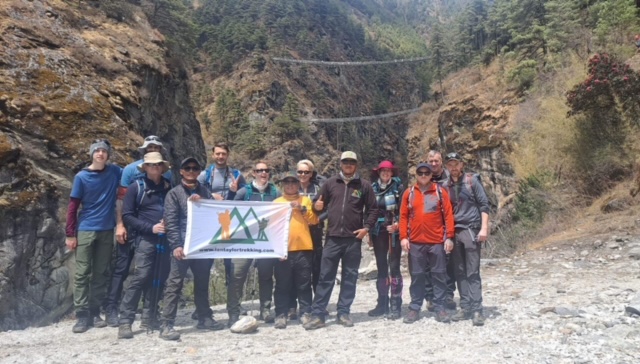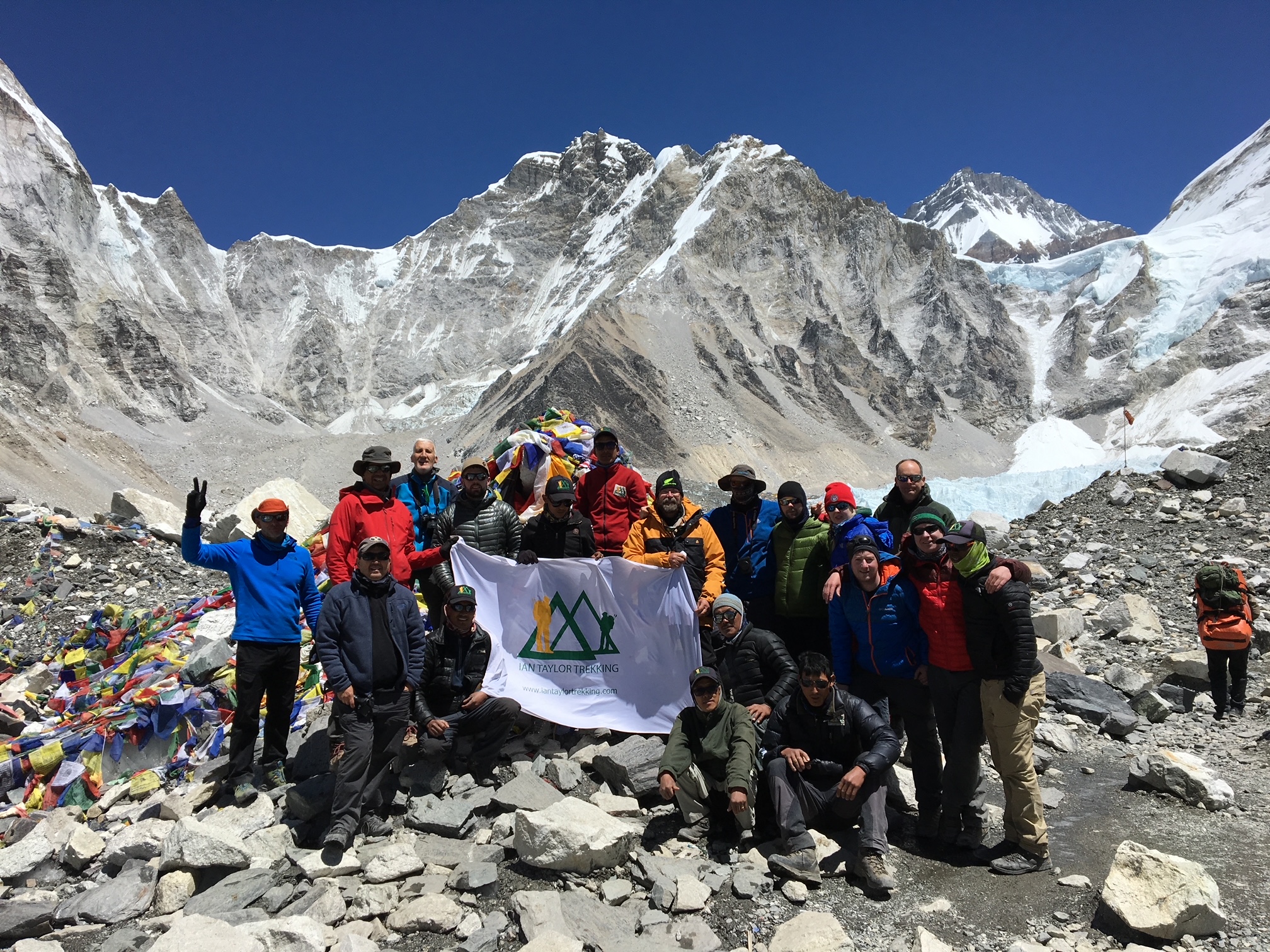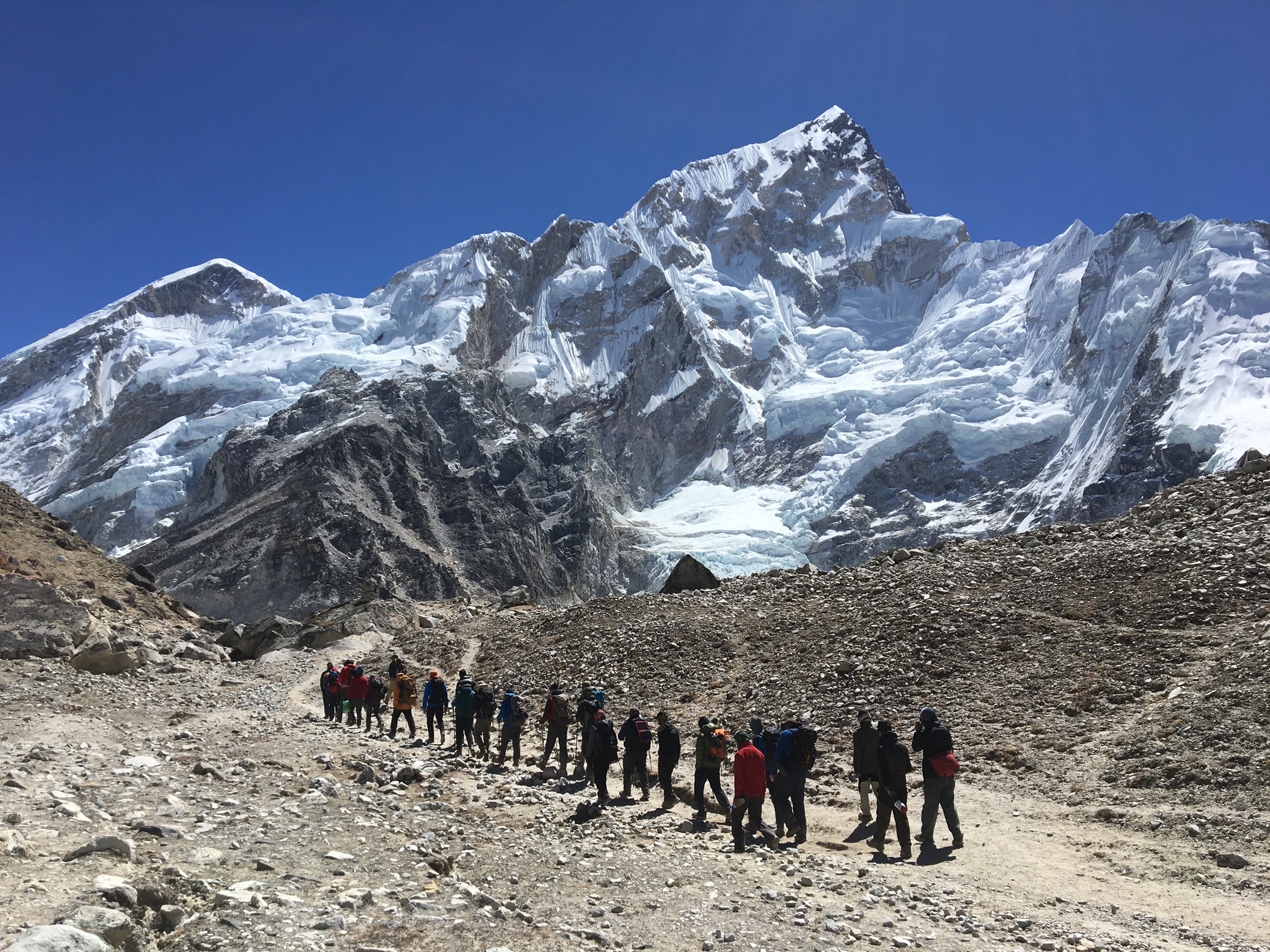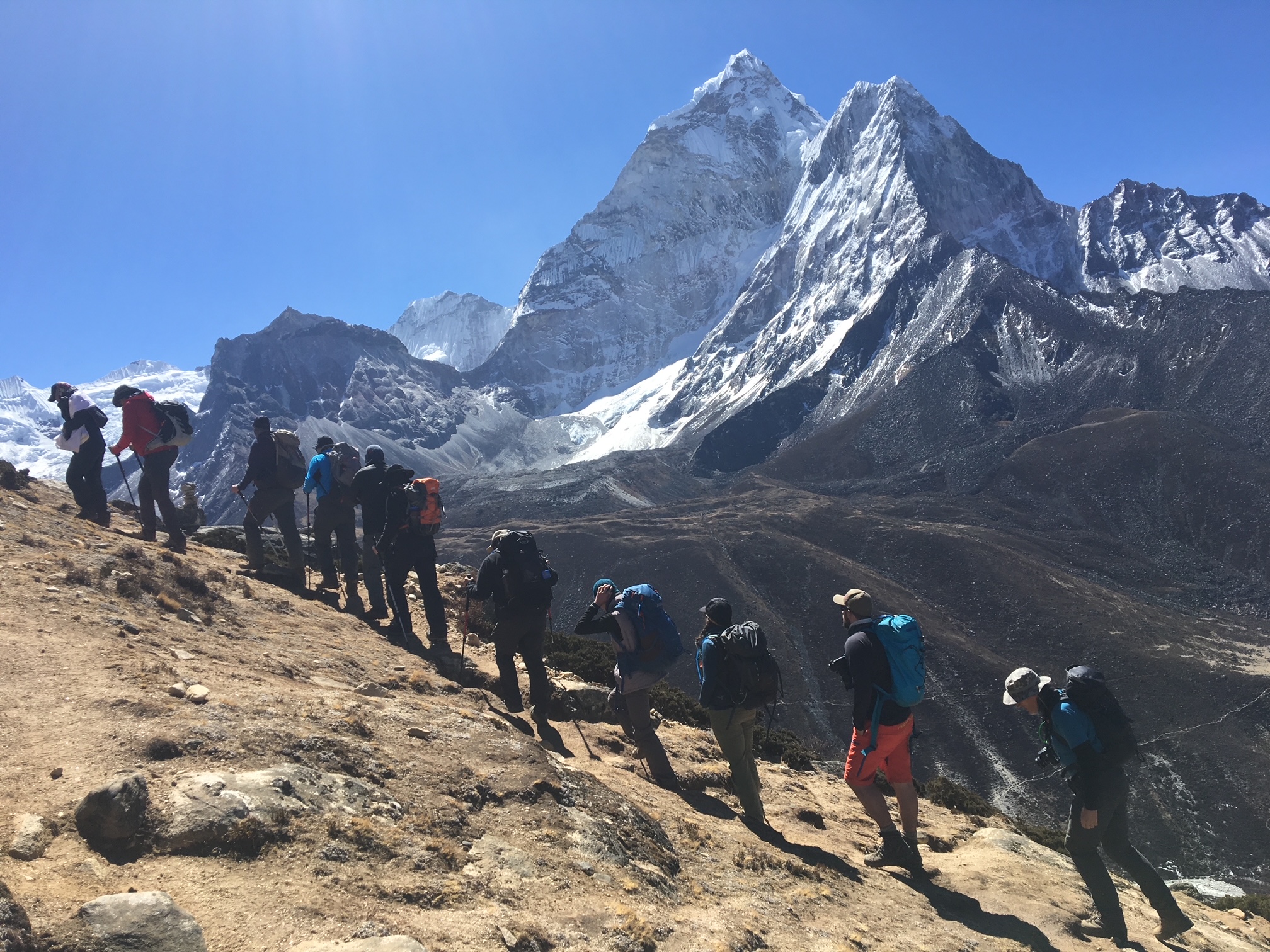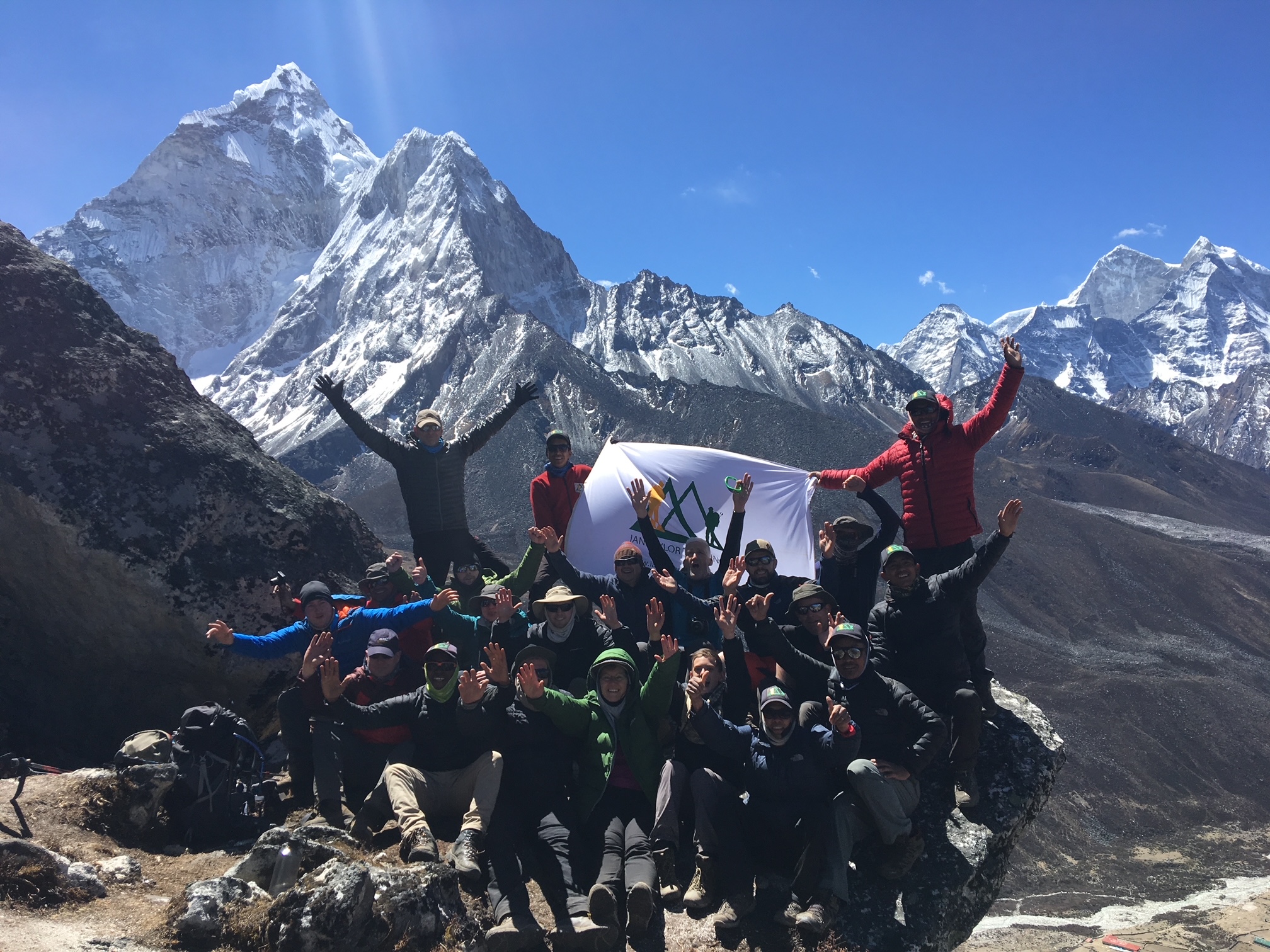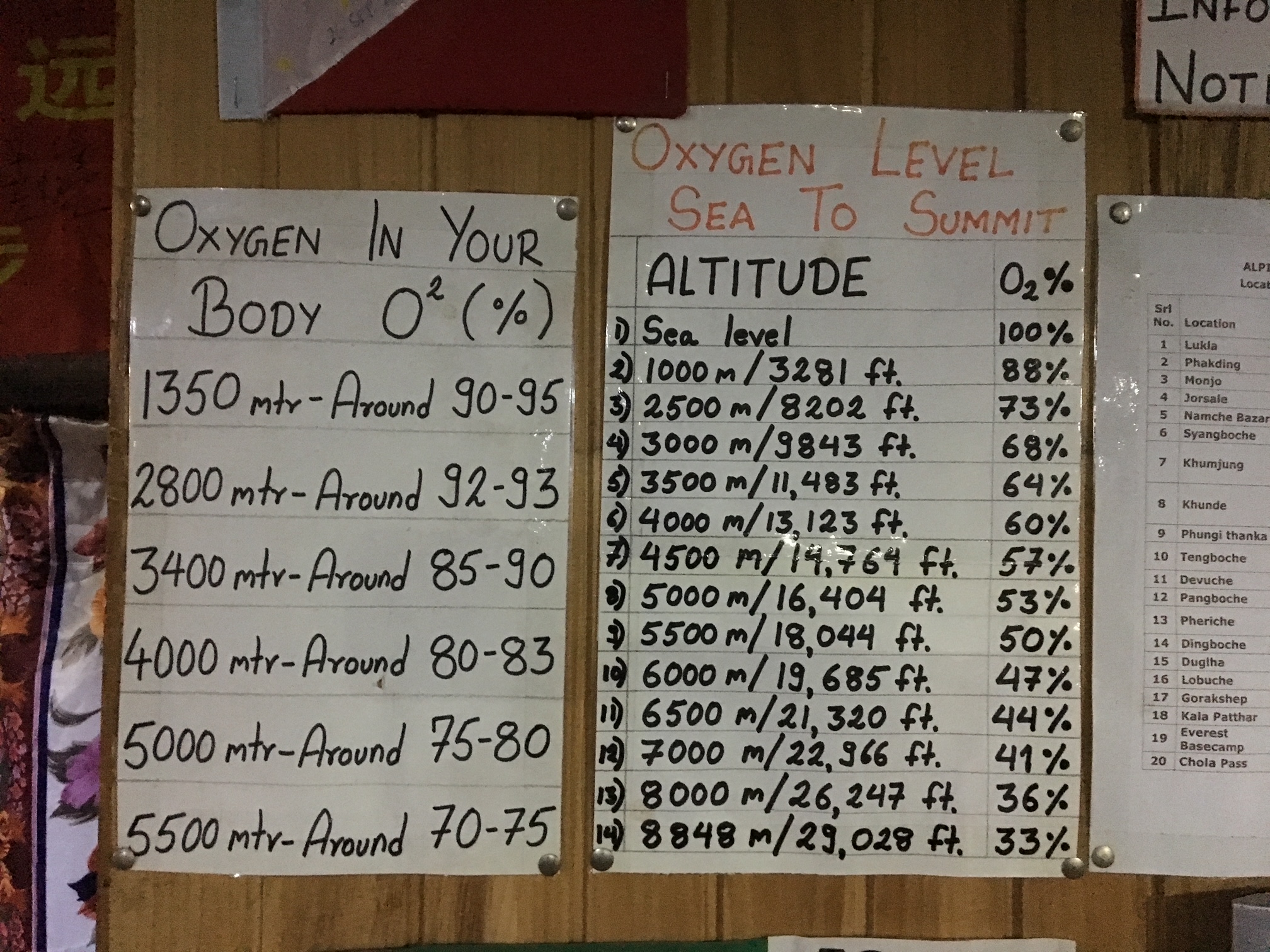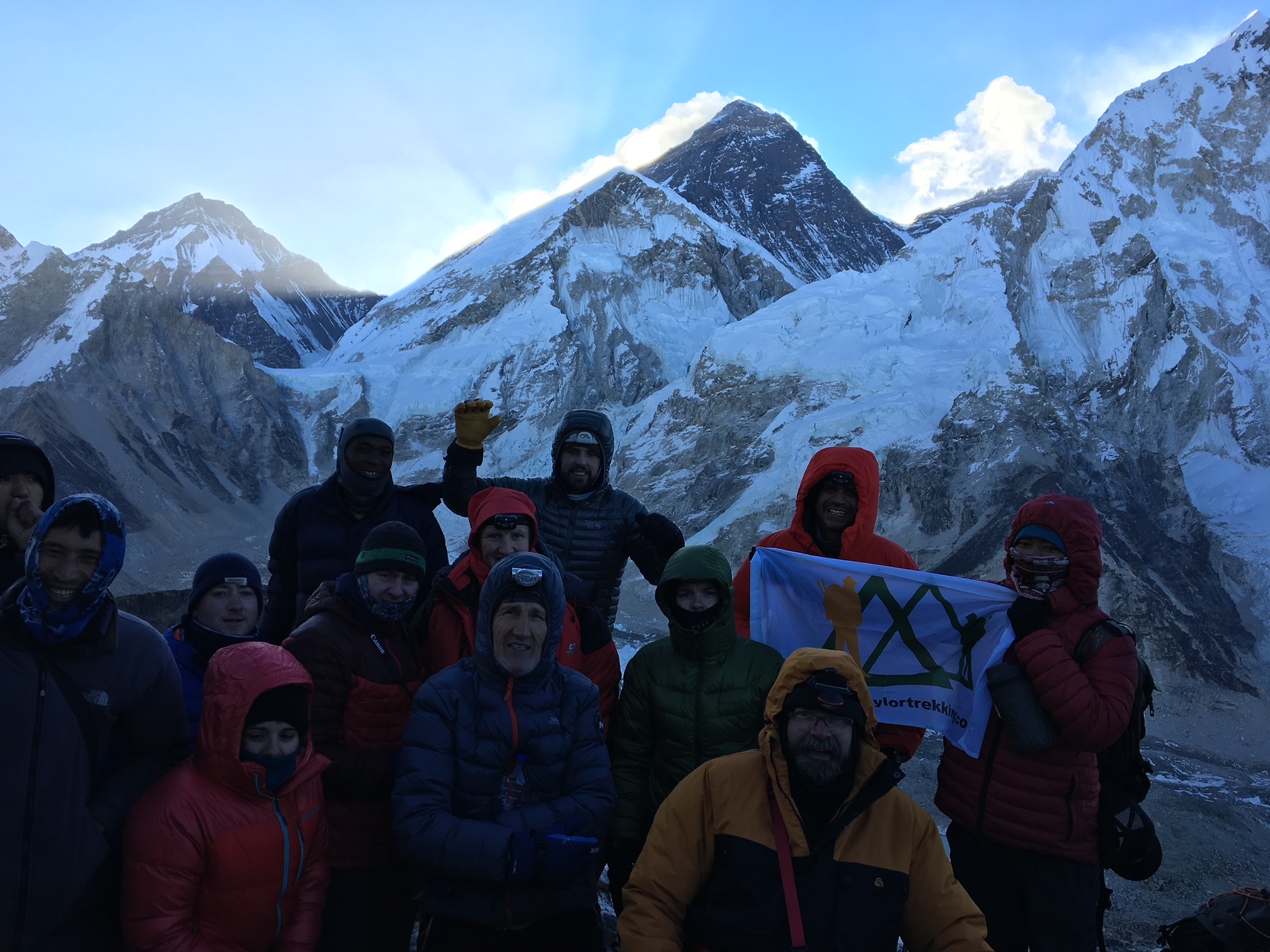Why acclimatization on the trek to Everest Base Camp was so Important. My first experience was horrendous, and it was time to go back and face my demons on the trail to Everest. At 4,350m/ 14,271 feet, in Dingbouche, I had to retreat back down the trail. Sometimes you need to learn the hard way or trust the advice of professional who has your safety at the forefront of the trip. I learned the hard way.
Doing it the Right Way
In 2013 I signed up to team trekking to Everest Base Camp. I had been on many treks before, none were at altitude and all in the in US and South America. My fitness was good, I was used to hiking and training. I ran a lot and participated in some 10k runs and half marathons.
I was a little surprised by the fatigue I felt on the first trek as I thought I was well prepared. After my failed attempt to complete the trek last time, I spoke to Ian and quickly learned that I was training and preparing all wrong.
First of all, on my first trip we were racing the trail, pumping high heart rates which I have learned it the totally wrong way to approach trekking at altitude. We would arrive tired sweaty with headaches each day. Our guides never told the group about drinking water and we never were hydrated. I have now learned how important this really is.
Poor Guiding on my First Trip
We only had one night in Namche on the way up. Our guide told us that there was bad weather coming and therefore, we needed to move higher. This meant we had to skip the second planned night of acclimatization.
We would go higher so we could get to base camp sooner. Nobody had an issue with this, because no one really understood altitude. Plus, we all felt fine in Namche and thought let’s keep going. This was a big mistake and cost me and all the team dearly.
Walking Too Fast
We moved to Phortse at 3,800m/ 12,467 feet before moving quickly to Dingbouche 4,350m/ 14,271 feet. At this elevation, I was starting to get dizzy so I knew I was done.
I already had a headache and was pumping Ibuprofen every few hours and still felt terrible. Others in the group where vomiting, not eating or sleeping. The first two days were enjoyable, however, that enjoyment was now gone.
No Sleep, No Food, No Rest
After no food or sleep I decided I needed to go down. We were originally a team of 8 trekkers with 1 guide. However, 6 decided to go back to lower altitude to get better.
The other 2 pushed on their own and got really sick at Lobuche 4,920m/ 16,142 feet and needed to be helicoptered out. Nobody made it and the journey back was so disheartening and mentally draining.
Failure is Not an Option
I enjoyed exploring Kathmandu for a few days and then decided I would come back and get myself to Everest Base Camp. I started to do a lot of research on altitude and acclimatization and all the different elements required for making the journey happen.
This is when I found Ian Taylor Trekking. The information in the blog was amazing. The all you need to know about trekking to Everest Base Camp blog was the most useful for me. They also sent me a long trip dossier and answered all my questions quickly and efficiently.
Why Acclimatization is the Key to Success
I learned about acclimatization zones and the critical points that need acclimatization and the itinerary had three nights in Namche on the way up, in hindsight, this made all the sense in the world to me.
I learned quickly that strength, endurance and pacing were all critical factors for success along with hydration, staying out of the sun and keeping heart rates as low as possible.
Trekking to Everest, Learn from the Experts
The next step for me was to save up again and with other commitments needed to wait a couple of years before going back to Everest. I committed to my training and I was getting stronger month by month.
I was training up weighted back pack on the rotating stairs building up from 45 minutes to 1 hour 30 minutes per day along with a longer 3 to 5 hour session once a week.
Also, I added in weight training building up extra strength in my calf’s, quads and core. I took time off here an there but 6 months out from the trek I was building up slowly.
Strength was easier to come by than endurance and needed those longer sessions to really help me build up for the trek.
Training and Acclimatization
More acclimatization and better physical preparation for this trip really made all the difference. We also stayed in better lodges with better food. With added acclimatization.
I could eat well and felt so much better on the trek. I took Diamox on Ian’s recommendation and also had Ibuprofen with me. However, I only had to use Ibuprofen a few times on the trek.
Picking the Right Itinerary
I breezed through the first part of the trek and enjoyed staying in Tengbouche this time round. The first time I was here, I had such a terrible experience. It was nice to feel strong in Dingbouche.
My favorite part of the trek was the next day. The hike up Nagarjun was steep, however it was worth it. I never really remembered much of the trail or mountains as we were racing all the time.
This time the views were stunning. I could enjoy every moment as I was not under so much pressure. I felt good, no headaches or any other altitude sickness, however each day was tiring.
Feeling Great the Second Time Around
After two great nights in Dingbouche our team of 10 headed to Lobuche. In Lobuche I could notice the lack of oxygen and knew I was high.
People from other teams were looking in bad shape, vomiting and feeling fatigued. There is no way I would have been able to stay here on my first trip.
A Great Team with Great Advice
Our guides were great, helping bring tea, bags to the rooms and generally looking out for us. We had 4 guides for a team of 10 trekkers which really helped the team feel good about the group, set up and schedule we were on. I knew this was it.
Tomorrow we would go to Everest Base Camp. I made sure my hygiene was good, didn’t eat too much and prepared for the 7 hour hike in and out of base camp.
Reaching Gorak Shep
We would hike for 2 hours 45 minutes to reach Gorak Shep where we would get more water, eat and prepare for the next 2 hours trekking into Everest Base Camp. The trek across the glacial moraine was not easy and tougher than most people expected.
The people who didn’t do enough strength training felt it more. I felt good and strong.
Before I knew it I could see tents in Everest Base Camp and we were dropping down onto the glacier. I was not a big fan of that section down or up as the risk of landslide and rock fall was high.
Khumbu Glacier
The views along the Khumbu glacier were special and I really embraced by time at Everest Base Camp. It took me 3 years to get back here and it was sweet. I had achieved my goal and was immensely proud of myself.
I wish I had of done more research the first time. Hiking up Kala Phattar was harder than I thought, however, the unforgettable view of Mount Everest was worth it.
Trust the Experts
I really wanted to write this post and hope it helps others in their preparation for making this amazing trek to Mount Everest. Train hard, build up the strength and endurance.
Follow Ian’s advice and acclimatization schedule and you will have a real Everest Base Camp Trekking experience with great people. Read some more REVIEWS.
Jason Myers, Everest Base Camp Trek 2016

